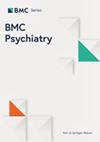针对牙科恐惧症和牙科焦虑症患者心理创伤经历的跨学科 CBT 治疗:一个病例系列
IF 3.4
2区 医学
Q2 PSYCHIATRY
引用次数: 0
摘要
认知行为疗法(CBT)是一种行之有效的治疗牙科恐惧症的方法,但有关其对因心理创伤经历而产生牙科焦虑的患者的效果的研究却很少。本研究旨在评估酷刑、虐待和牙科焦虑(TADA)跨学科团队治疗牙科恐惧症或牙科焦虑症患者的症状变化和可接受性。我们还希望描述样本的口腔健康状况。TADA 团队提供有针对性的焦虑治疗,并采用 CBT 方法调整牙科治疗。该研究采用自然主义病例系列设计,包括 20 名连续转诊到一家公立 TADA 牙科诊所的门诊患者。治疗前和治疗后的评估包括与牙科焦虑程度、创伤后应激、广泛性焦虑和抑郁有关的问卷。患者在治疗前接受了全景 X 光检查。牙科修复前,患者接受口腔健康检查,以确定粘膜和牙菌斑评分(MPS)以及蛀牙、缺失牙和填充牙总数(DMFT)。患者在 TADA 小组完成 CBT(第 1 阶段)后,被转介到牙医小组接受进一步的牙科治疗和康复(第 2 阶段)。第 2 阶段的牙科治疗结果不包括在本研究中。所有患者都完成了 CBT 治疗。牙科焦虑、创伤后应激和抑郁症状有了明显改善,广泛焦虑症状也有了适度变化。牙科状况在严重程度和累积的牙科治疗需求方面存在差异。TADA人群代表了较低的社会经济水平;15%的患者具有较高的教育水平,半数患者享受社会保障福利。所有患者都被转诊并开始了适应性牙科治疗(第二阶段)。TADA 治疗方法似乎是可以接受的,而且可能对患有牙科恐惧症和与心理创伤经历有关的牙科焦虑症的患者有益。研究结果表明,有必要开展进一步研究,包括更大规模的对照研究,以验证这些初步结果。该研究已获得挪威地区伦理委员会(REK-Midt:488462)和默勒和罗姆斯达尔郡政府数据保护委员会的批准。本文章由计算机程序翻译,如有差异,请以英文原文为准。
Interdisciplinary CBT treatment for patients with odontophobia and dental anxiety related to psychological trauma experiences: a case series
While cognitive-behavioural therapy (CBT) is a well-established treatment for odontophobia, research is sparse regarding its effect on patients with dental anxiety related to psychological trauma experiences. This study aimed to evaluate changes in symptoms and acceptability of interdisciplinary Torture, Abuse, and Dental Anxiety (TADA) team treatment for patients with odontophobia or dental anxiety. We also wanted to describe the sample’s oral health status. The TADA teams offer targeted anxiety treatment and adapted dental treatment using a CBT approach. The study used a naturalistic, case series design and included 20 consecutively referred outpatients at a public TADA dental clinic. Pre- and post-treatment assessments included questionnaires related to the degree of dental anxiety, post-traumatic stress, generalized anxiety, and depression. Patients underwent a panoramic X-ray before treatment. Before dental restoration, patients underwent an oral health examination to determine the mucosal and plaque score (MPS) and the total number of decayed, missing, and filled teeth (DMFT). Patients were referred to dentist teams for further dental treatment and rehabilitation (phase 2) after completing CBT in the TADA team (Phase 1). Results from the dental treatment in phase 2 is not included in this study. All patients completed the CBT treatment. There were significant improvements in symptoms of dental anxiety, post-traumatic stress, and depression and moderate changes in symptoms of generalized anxiety. Dental statuses were heterogeneous in terms of the severity and accumulated dental treatment needs. The TADA population represented the lower socioeconomic range; 15% of patients had higher education levels, and half received social security benefits. All patients were referred to and started adapted dental treatment (phase 2). TADA treatment approach appears acceptable and potentially beneficial for patients with odontophobia and dental anxiety related to psychological trauma experiences. The findings suggest that further research, including larger controlled studies, is warranted to validate these preliminary outcomes. The study was approved by the regional ethical committee in Norway (REK-Midt: 488462) and by the Data Protection Board at Møre and Romsdal County Authority.
求助全文
通过发布文献求助,成功后即可免费获取论文全文。
去求助
来源期刊

BMC Psychiatry
医学-精神病学
CiteScore
5.90
自引率
4.50%
发文量
716
审稿时长
3-6 weeks
期刊介绍:
BMC Psychiatry is an open access, peer-reviewed journal that considers articles on all aspects of the prevention, diagnosis and management of psychiatric disorders, as well as related molecular genetics, pathophysiology, and epidemiology.
 求助内容:
求助内容: 应助结果提醒方式:
应助结果提醒方式:


